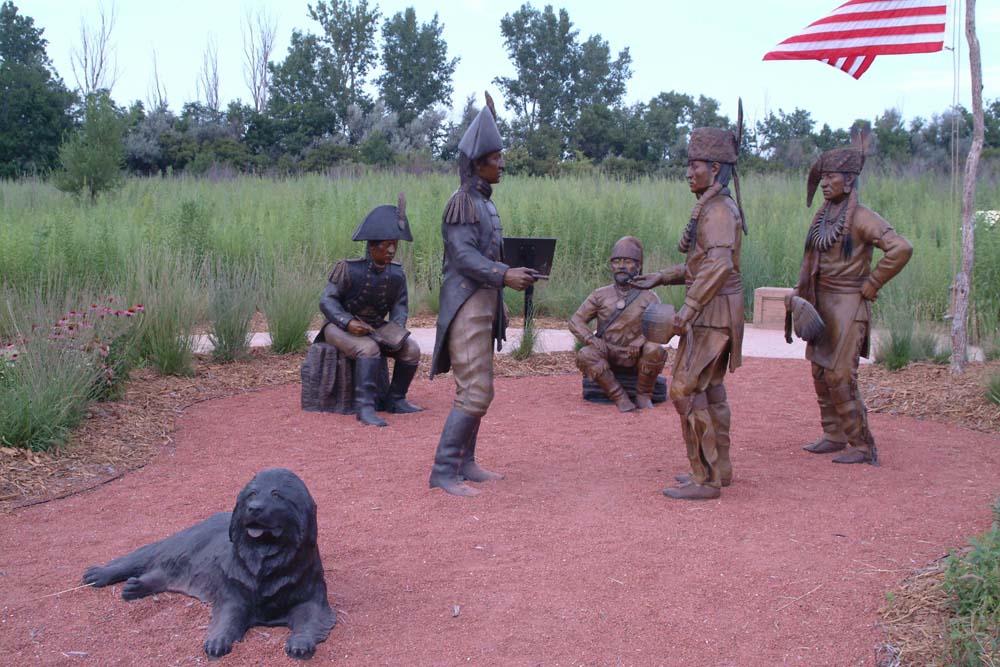The Otoe Indians were part of
the Southern Sioux tribes who lived along the
Missouri River near the present-day border of
Missouri and Nebraska. They were buffalo-hunters
and farmers who lived in oven-shaped,
earth-covered houses grouped into towns.
Smallpox had depleted their numbers, so the Otoe Indians
combined with the neighboring Missouri Indians, and their
villages totaled about 250 people.
Many of the Otoe's and Missouri's were away hunting
buffalo when the Lewis and Clark expedition reached their
towns in late July 1804. The Corps sent out two men to
search for the Indians but came up empty. The captains
decided to proceed up the river.
On August 2, a small group of Otoe's and Missouri's
arrived at the Corps’ camp site, which Clark had named
Council Bluff – across and downriver from what is now
Council Bluffs, Iowa. The leading chiefs were still away
hunting, but Lewis and Clark invited six or seven lesser
chiefs to a council the next morning.
On August 3, with great ceremony, Lewis and Clark held
the first formal meeting between representatives of the
United States and western Indians. The Indians observed as
the soldiers marched in full regalia and demonstrated their
skills with weaponry. The Corps’ show of decorum and
military strength would establish the routine for subsequent
councils.
During the council, the Indians were told they were the
“children” of a new “great father” who would provide them
with trade and protection in place of their unreliable
commerce with the French and the Spanish. It was a speech
Lewis would deliver to numerous tribes throughout the
journey.
The Otoe's were advised to make peace with other Indian
tribes in order to bring the trade Lewis promised. He also
urged the chiefs to send a delegation east to visit
President Jefferson. When Lewis concluded, each chief
received gifts including a peace medal and face paint. But
the captains also sought a council with the leading Otoe
chief, Little Thief. Lewis had the chiefs take gifts
and a copy of his speech to Little Thief in hopes the leader
would meet them further up the river.
On August 18, Little Thief and the main Missouri chief,
Big Horse, met with the Corps. Lewis gave his speech, and
Little Thief agreed that peace would benefit everyone. He
asked the captains to negotiate peace between the Otoe's and
the Omaha Indians. But Little Thief also noted that most
important to the Otoe's was the price and quality of trade
goods.
Before departing, Little Thief indicated he would go to
Washington in the spring. In March 1805, a delegation
including Little Thief and one Missouri chief met in
Washington, D.C., with President Jefferson, who promised
trade goods and told them he hoped for peace.
About Fort Atkinson
Fort Atkinson was occupied by the U.S. Army from
1820-1827. It was the first military post established west of the
Missouri River and its preservation, age, and research significance
have rendered it perhaps the most important Euroamerican
archeological site in Nebraska.
Fort Atkinson was a large military post with 1,000
officers and troops and untold numbers of civilians. Their
mission was to protect the burgeoning western fur trade and control
access to the upper Missouri and Platte Valley overland route.


